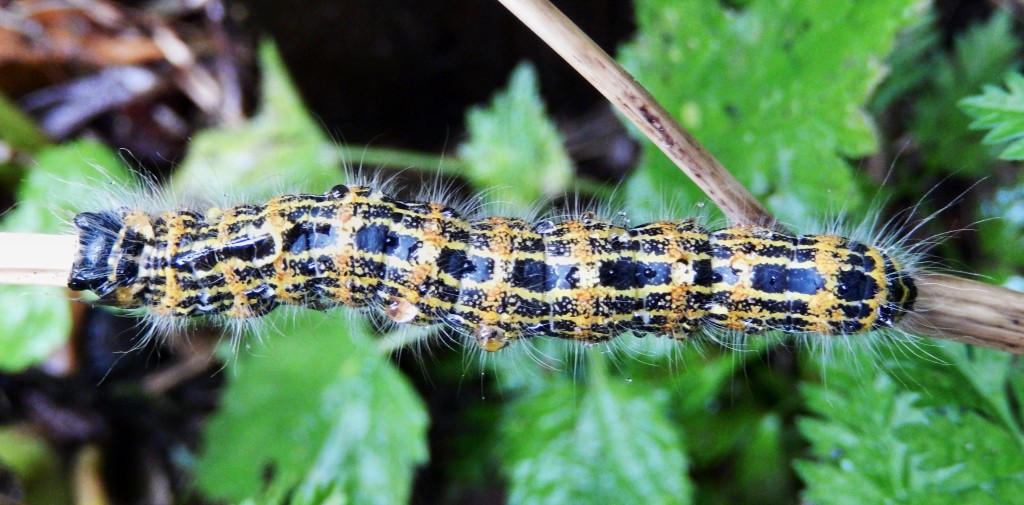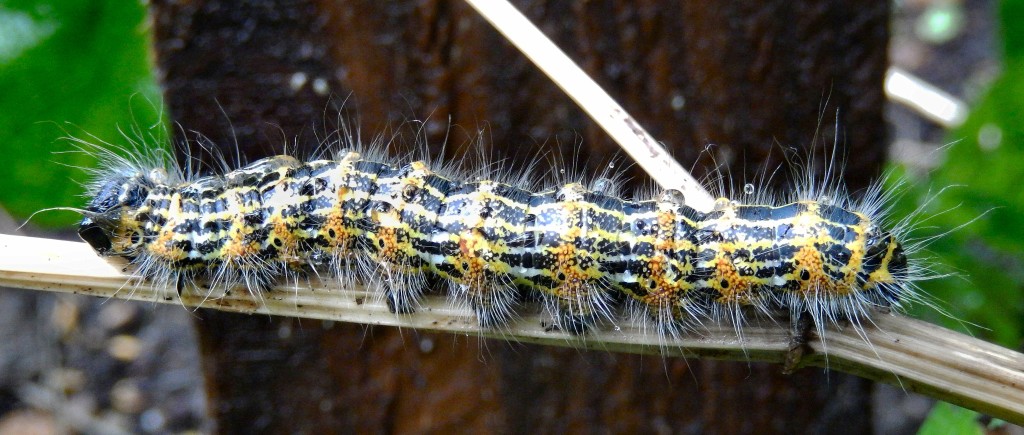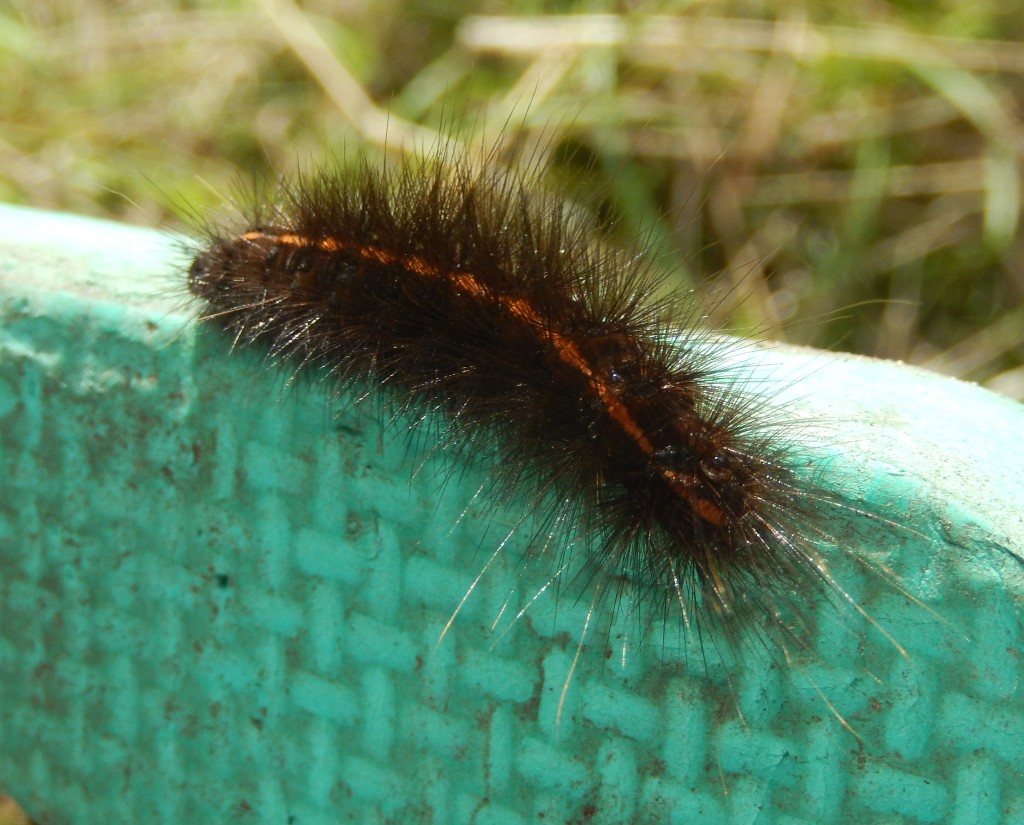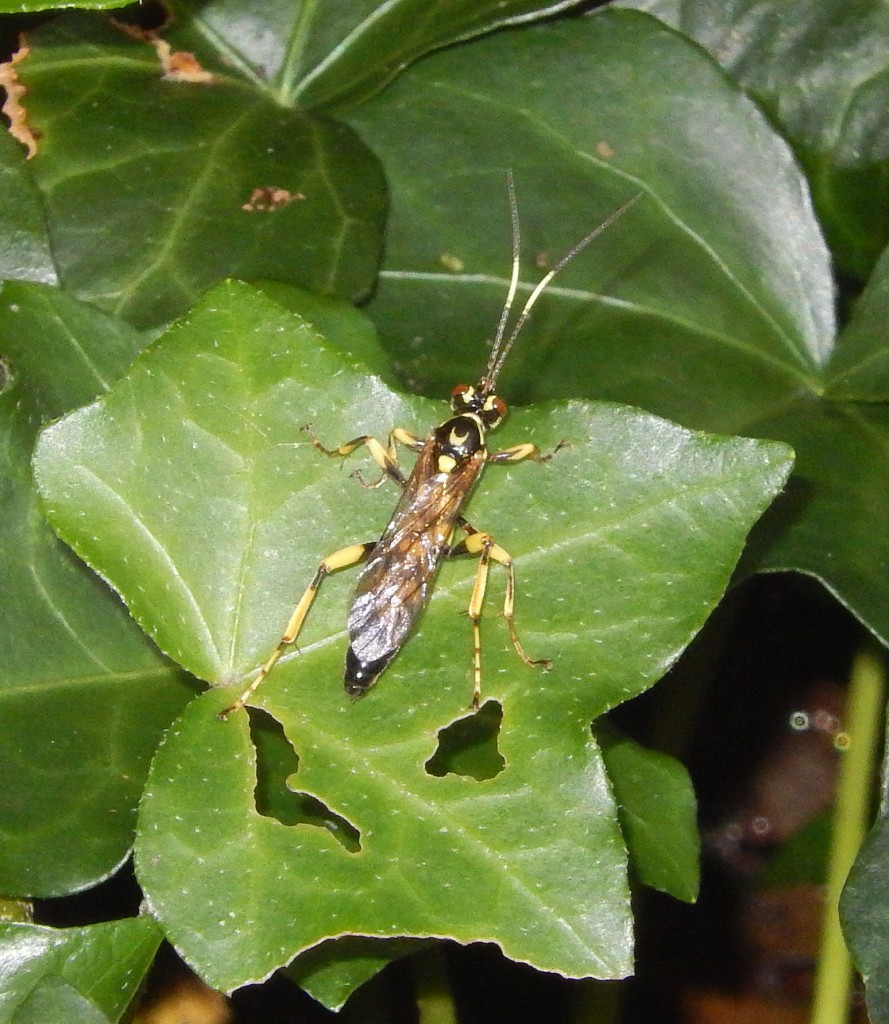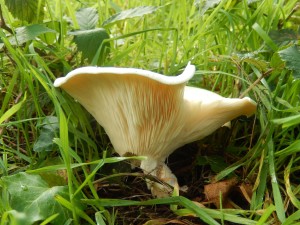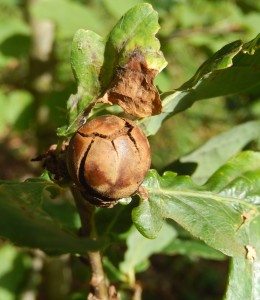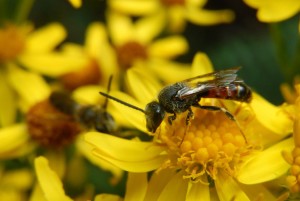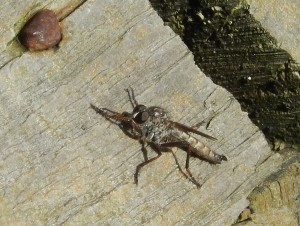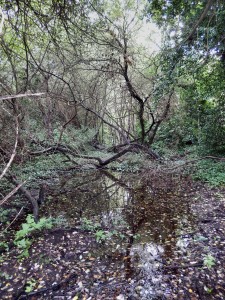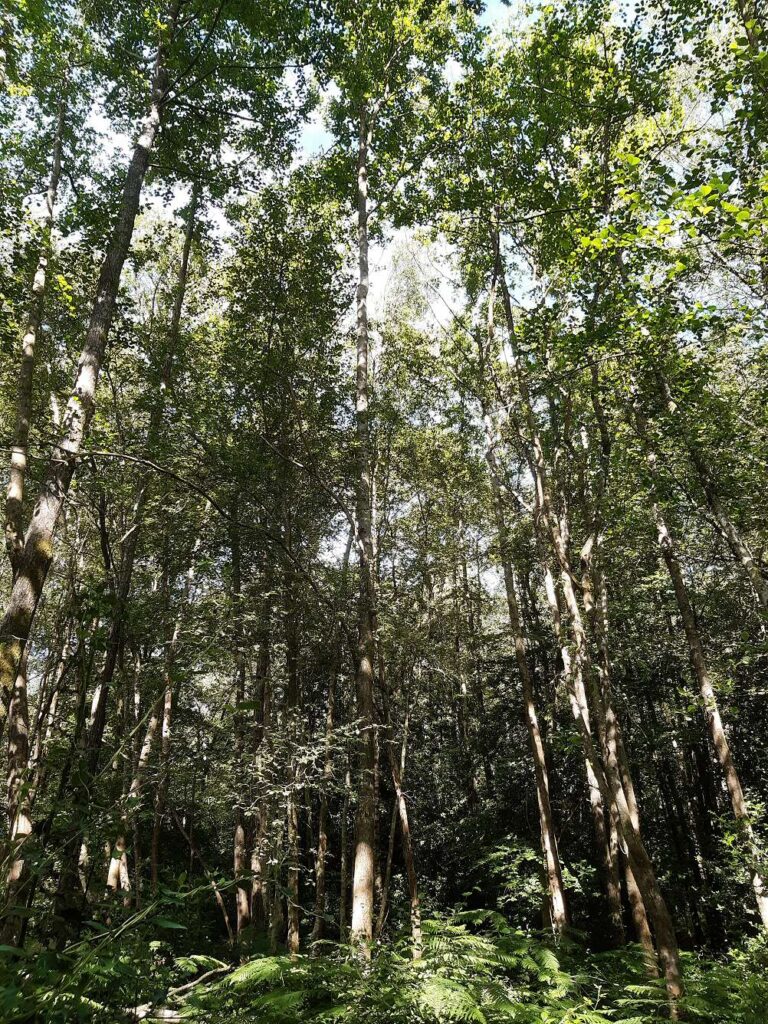
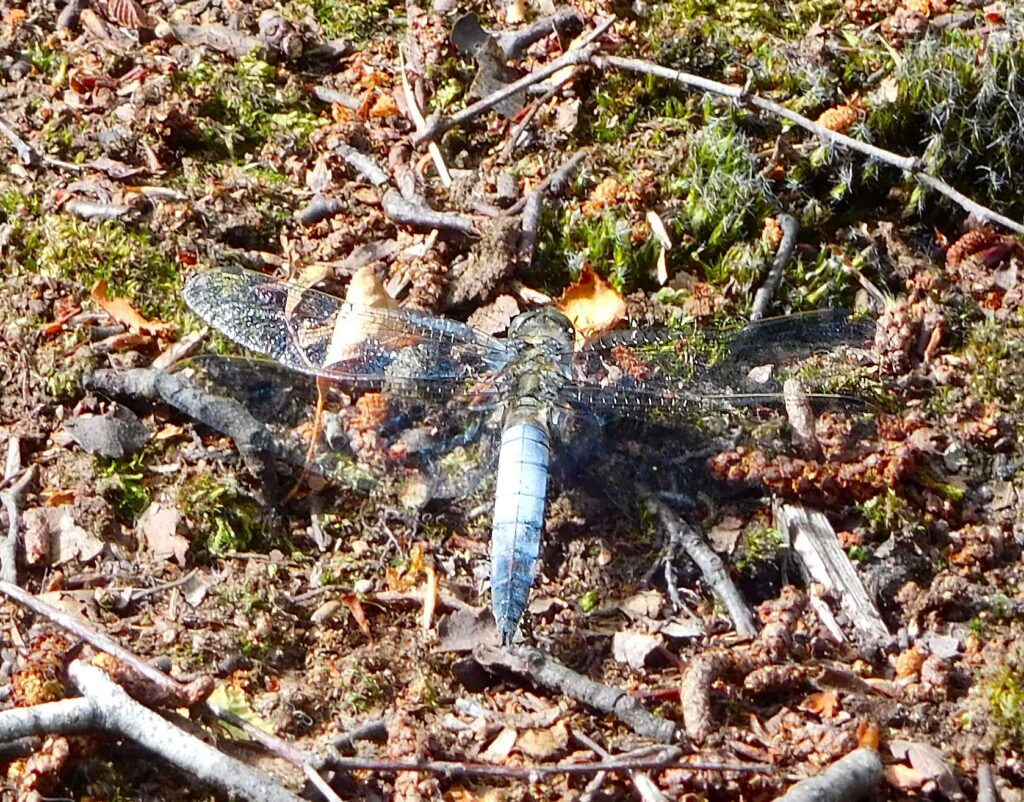
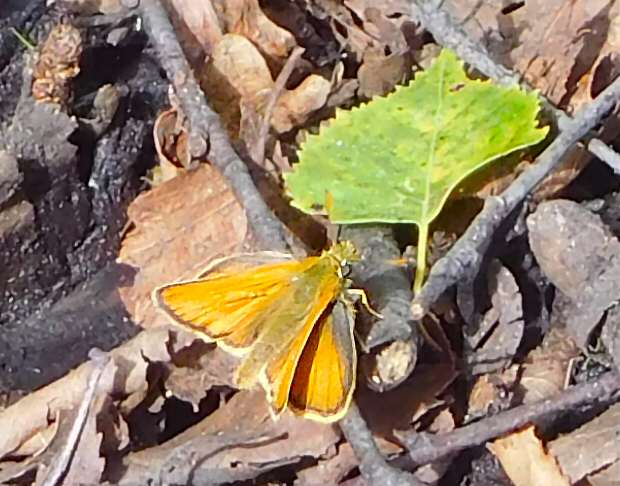
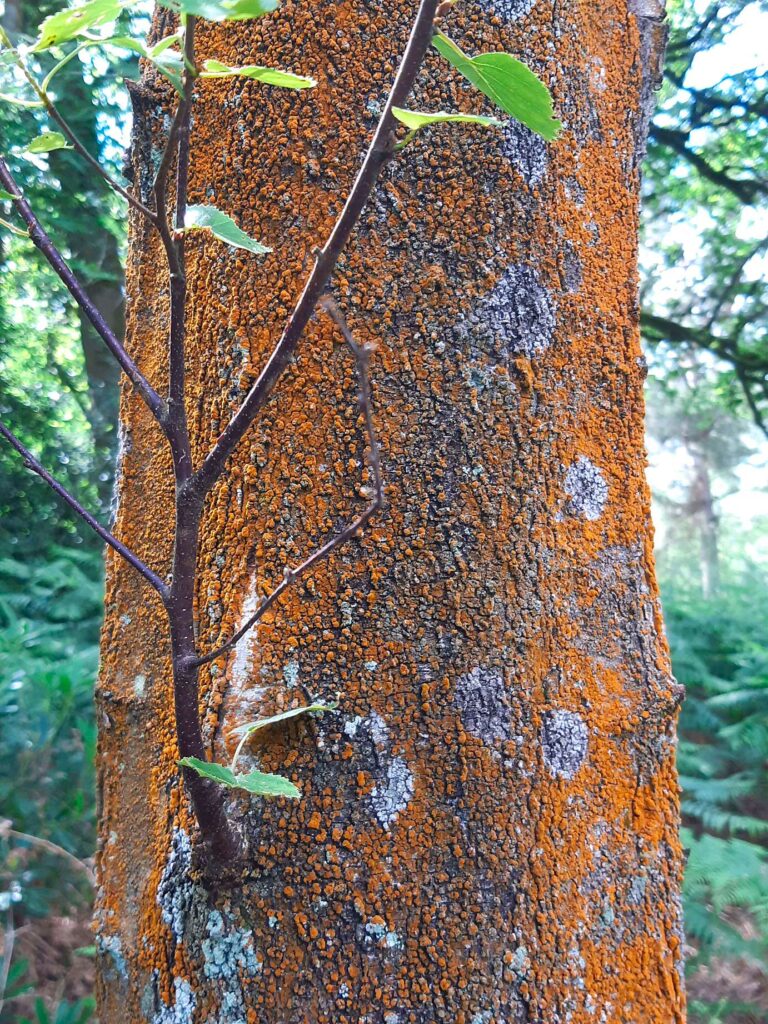
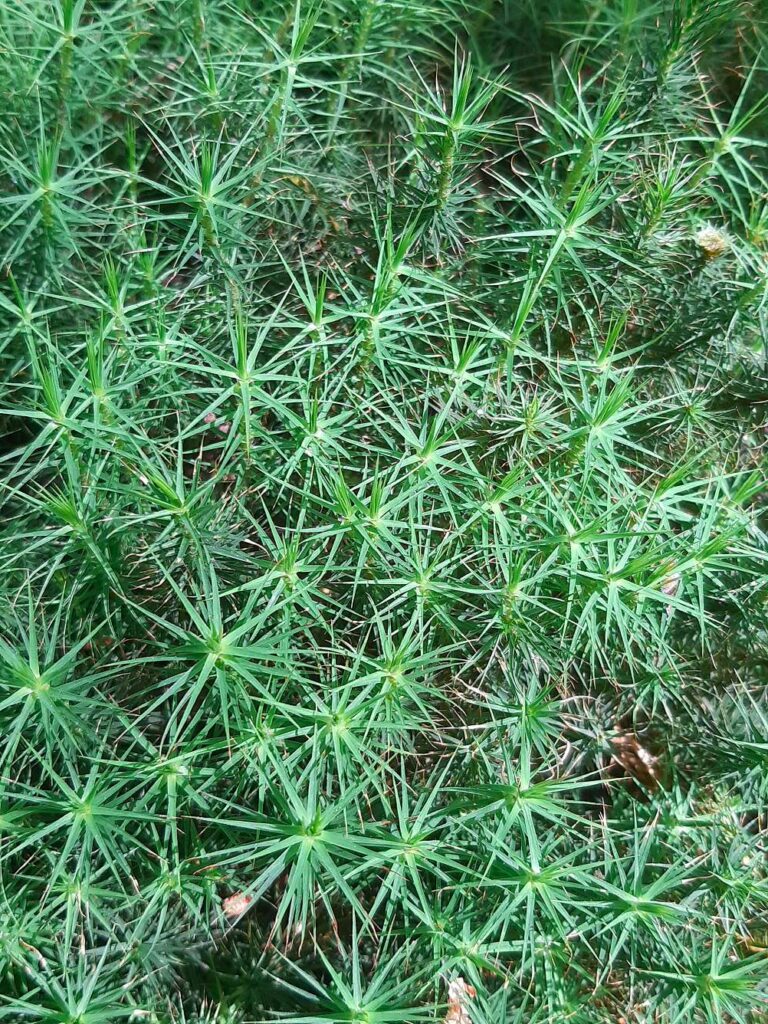
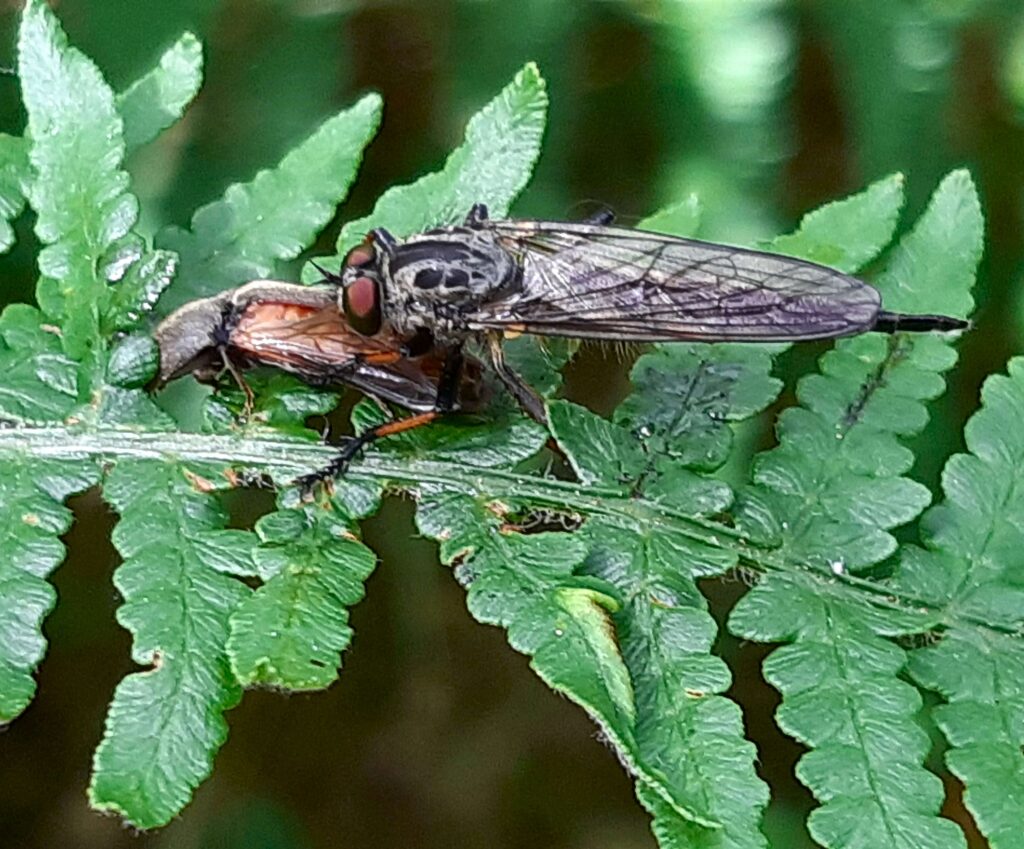






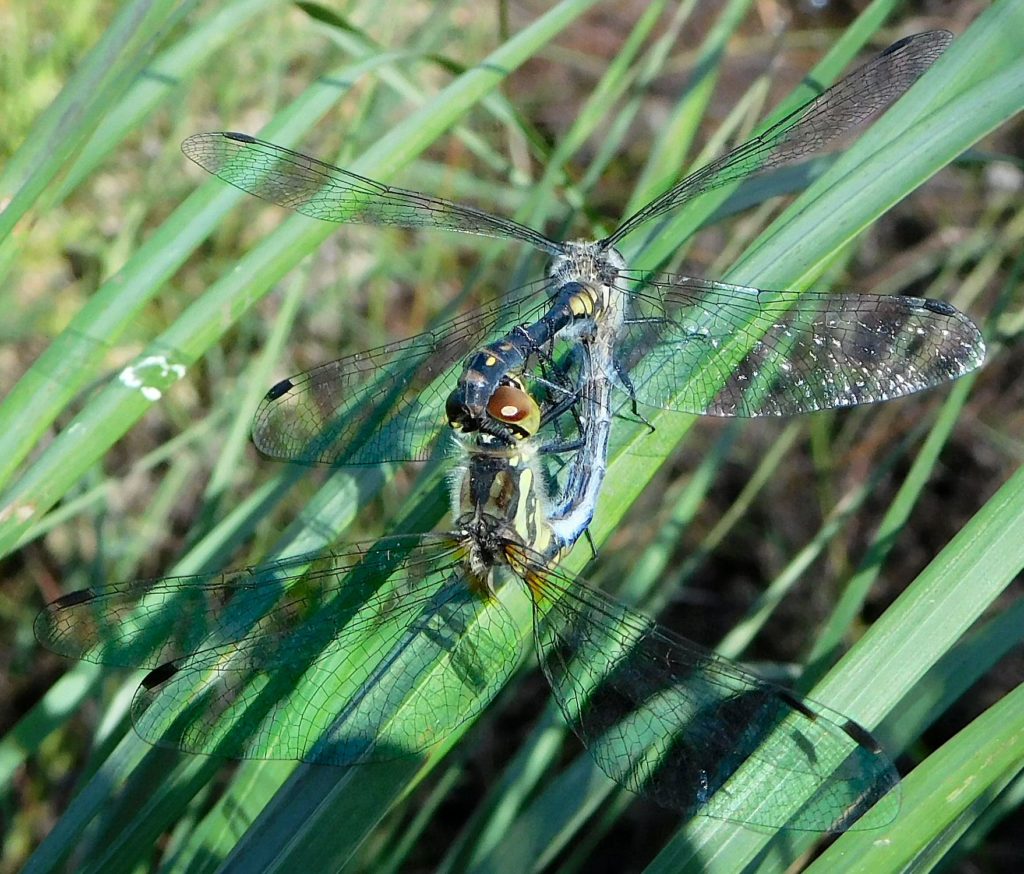
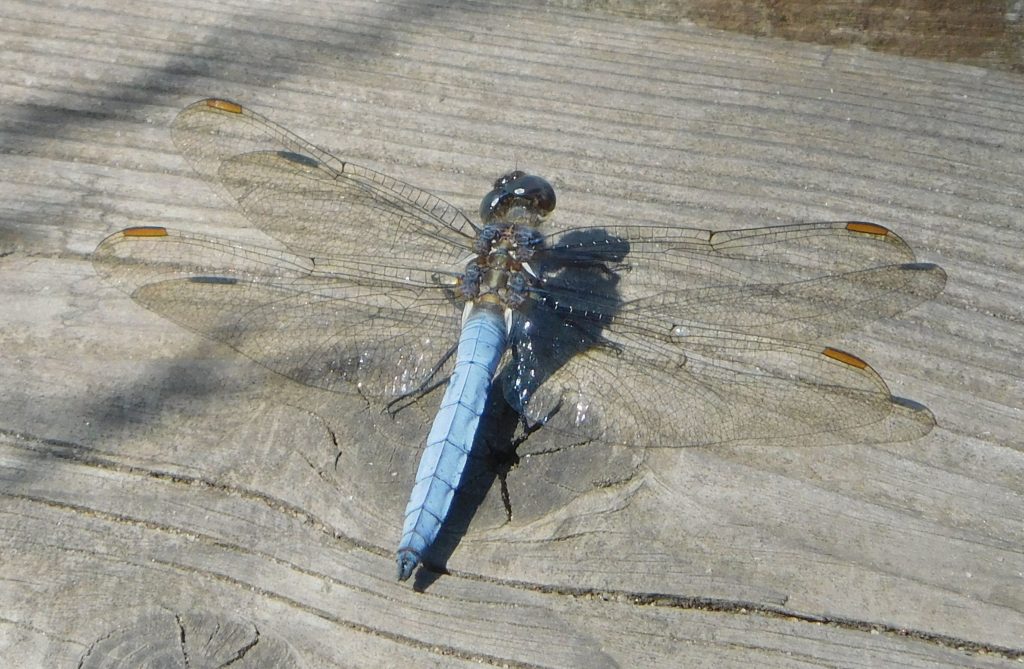
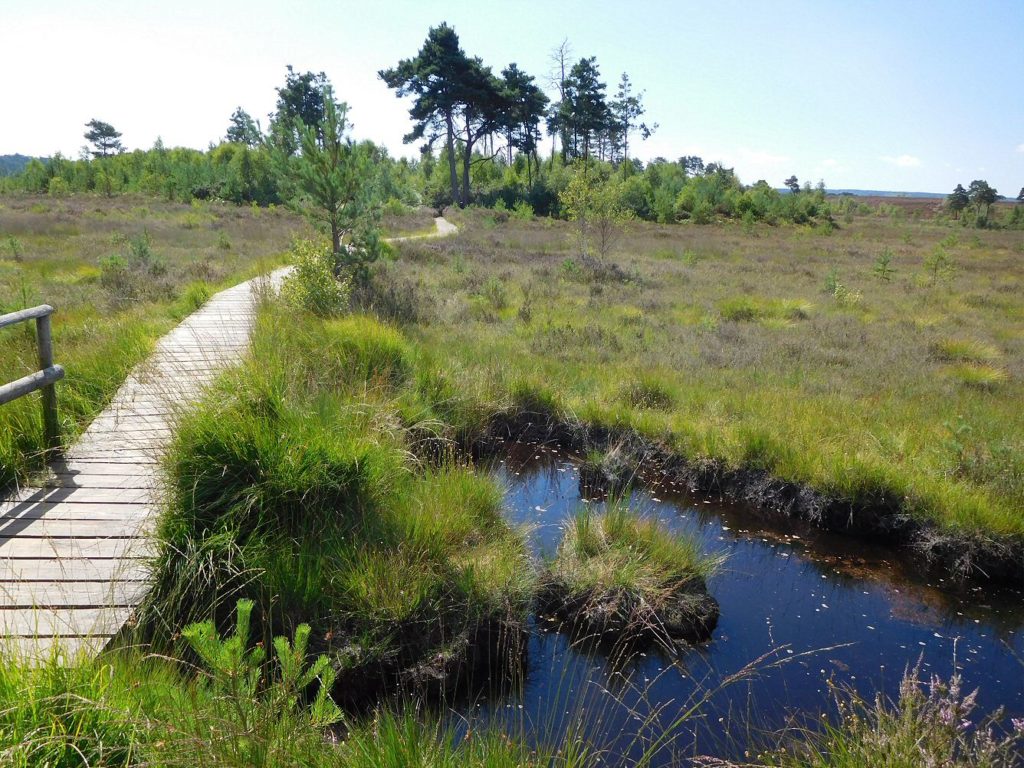
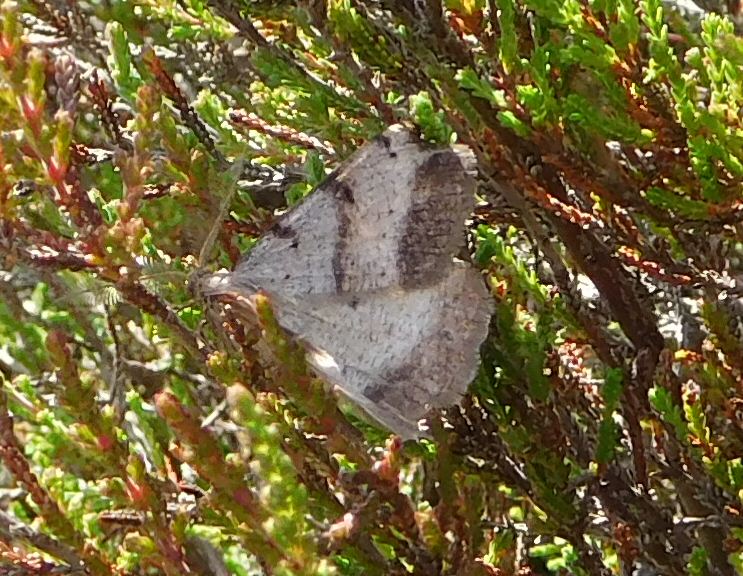
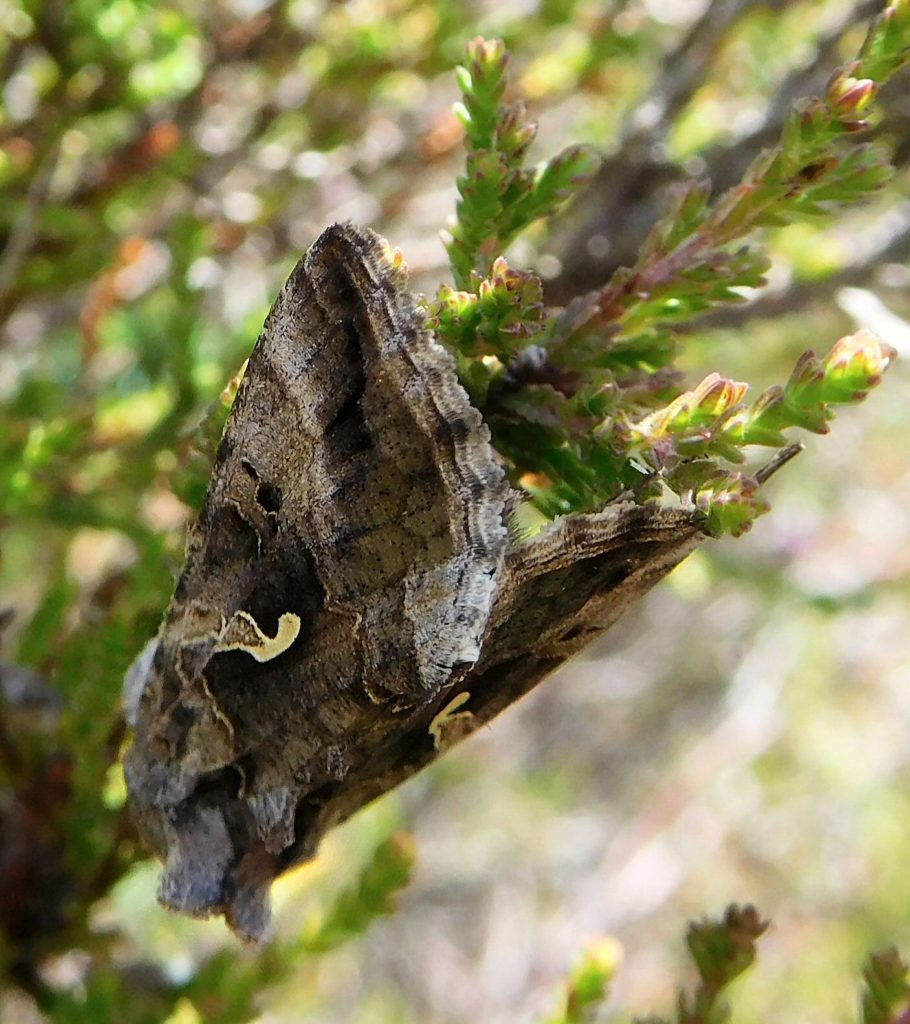
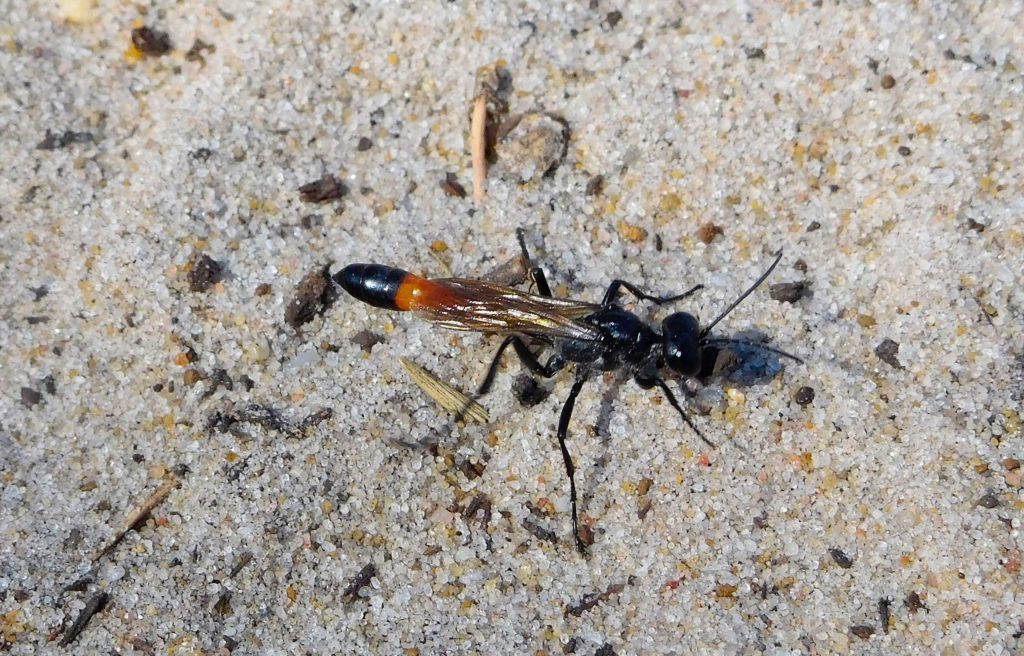
Right at the end of the walk, a huge leaf-green Emperor Moth caterpillar (Saturnia pavonia), whorled with black tufts on each segment, walked briskly like a self-propelled cylindrical concertina across the boardwalk. Just as I grabbed my camera and leant up close, it fell down the gap between two planks and disappeared into the thick green grass below. It was a sight to behold, as long and thick as a finger.
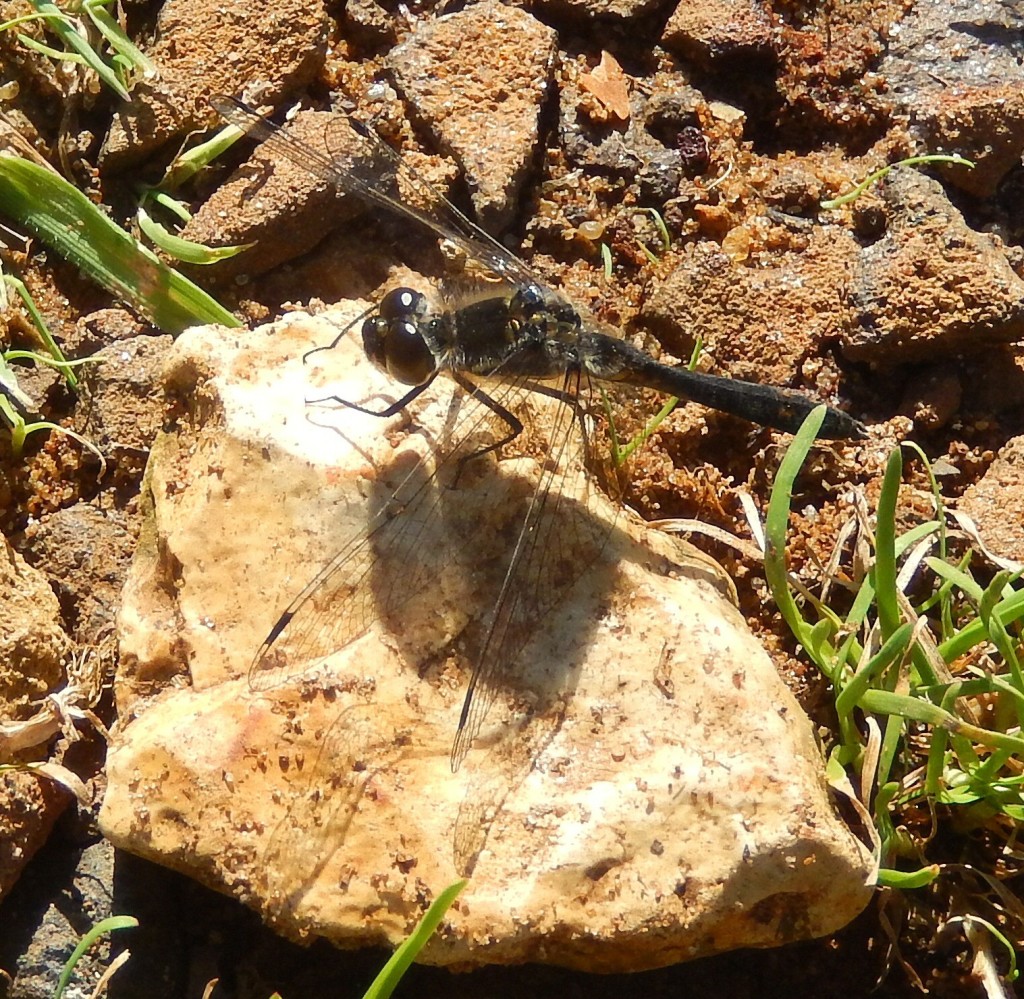
A flock of some fifty Swallows twittered high above the sparkling blue lake among the bog pools. Dragonflies – the occasional Emperor, plenty of small red Common Darters and tiny Black Darters, some Migrant Hawkers – dashed about or sunned themselves on the boardwalks. A pair of Hobbies, those dashing, Swift-winged falcons, soared and watched the Swallows cunningly, waiting for a careless moment. One of the Hobbies swooped down, raced low, agile, among the reeds, up and switchback over a dead tree to snatch a dragonfly on the wing, powered right across the wide bog all the way to the pinewoods. Three pairs of Common Darters in cop, the males leading the females, their claspers about their females’ necks, flew in strict formation like so many Spitfires. A Hobby, high above the bog, accelerated in a long straight shallow dive, for all the world like a Junkers 88 bomber taking careful aim, racing down for a hundred yards at incredible speed to grab a dragonfly: it must have seen its prey all that distance away.
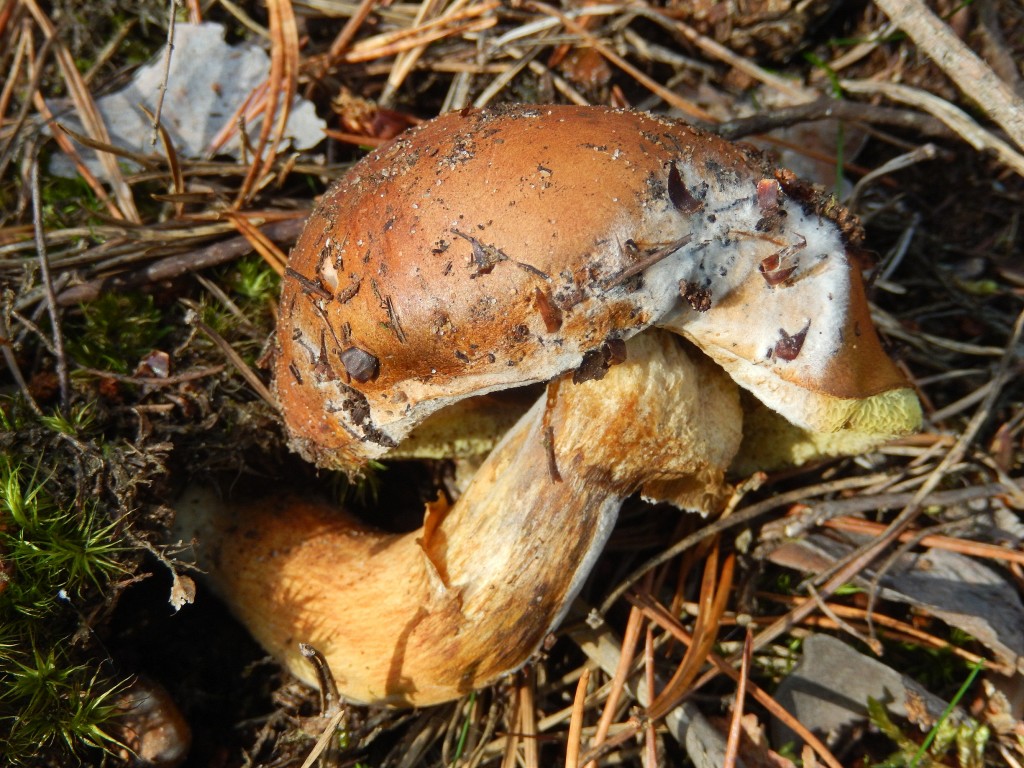
Clusters of the light brown Birch Bog Bolete – yes, it grows under Birches in Sphagnum bogs – are dotted about, their large squarish pores quite unlike the little round holes of the true Cep. Phillips says they’re edible but not worthwhile. This isn’t stopping a pair of plump thirty-something Poles with a sports bag wandering along collecting them (National Nature Reserve? Really?). I greet them, establish their nationality, say my mother used to do the same in the Carpathians and that there aren’t many mushrooms here. The guy with the sports bag shows me a meagre haul of Birch Bog Boletes just about lining the bottom of his bag: he means, he hasn’t found much worth collecting. I try Natsional Natur Reservat and waggle my finger, we part smiling and he shuffles off sheepishly.
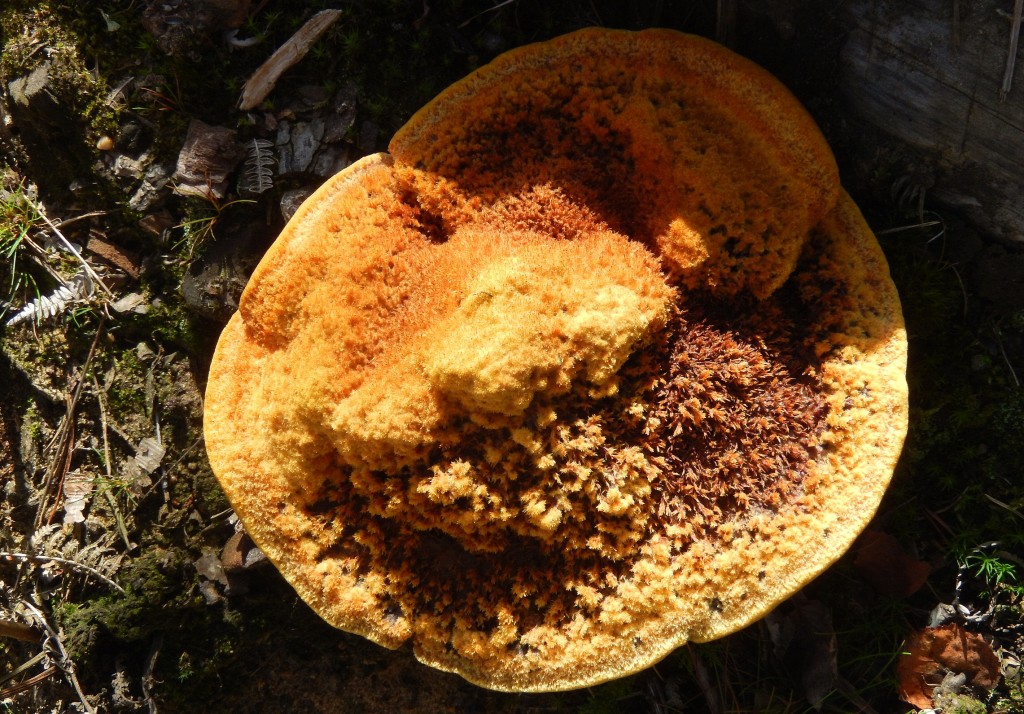
Under some Pine trees, a dead stump, killed by Phaeolus schweinitzii, three or four enormous dinner-plate sized yellow discs, thick and rough with orangey-brown branching tufts: they are overgrown Polypore bracket fungi, dangerous parasites of conifer tree roots. Nobody has given it an English name, which is a pity as the namers could really have fun with it: Yellow Pine Death? Giant Pine Polypore? A magnificent fungus, somewhat alarming if you’re a forester.
On the open sandy heath, some Ammophila sandwasps are still active, perching on the path. A few butterflies – a white, some Speckled Woods, probably a Red Admiral – are about; a very large brown butterfly with agile flight, dancing around a pine trunk and up high, is tantalisingly impossible to get binoculars on, was very probably a Fritillary, in which case it was likely the Silver-Washed Fritillary.
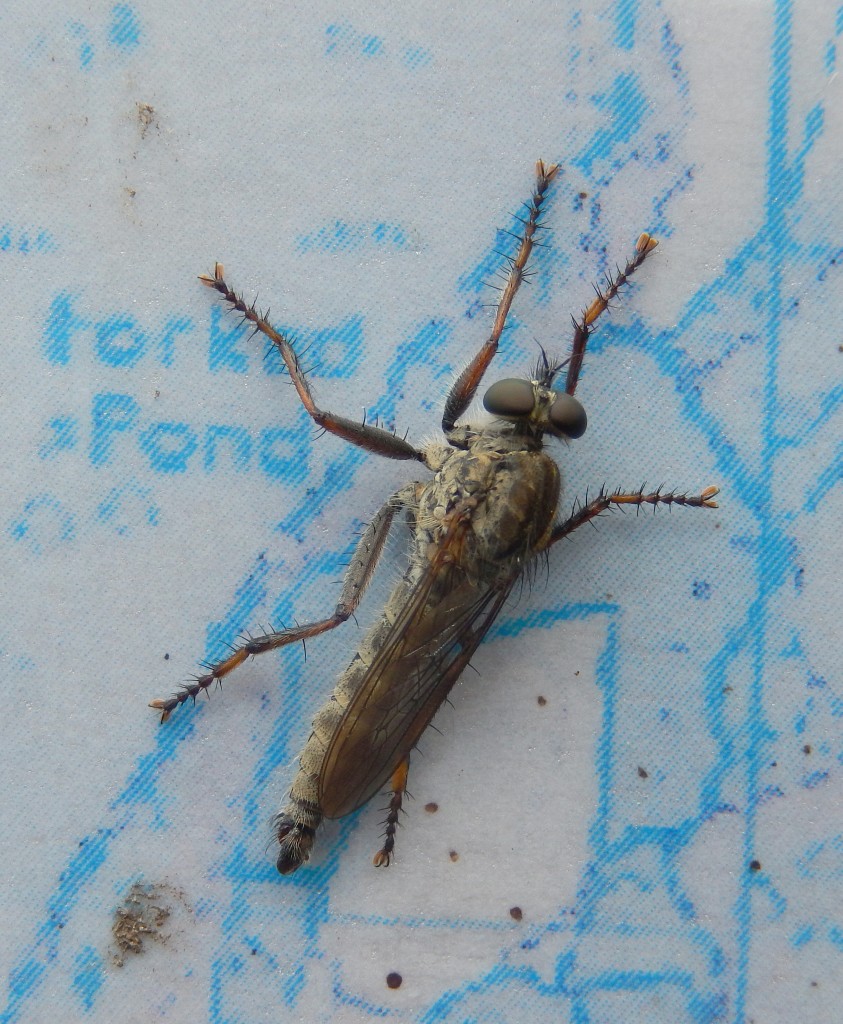
A couple of mean Robber Flies perched on a rather bleached map of the common: they had as Shakespeare said “a lean and hungry look”. They have a tuft of stiff bristles below their antennae to keep their prey from striking them in the head. They wait on a perch – a signboard will do if there’s nothing better – until an unsuspecting fly comes past, then they sally into the air and grab it.
